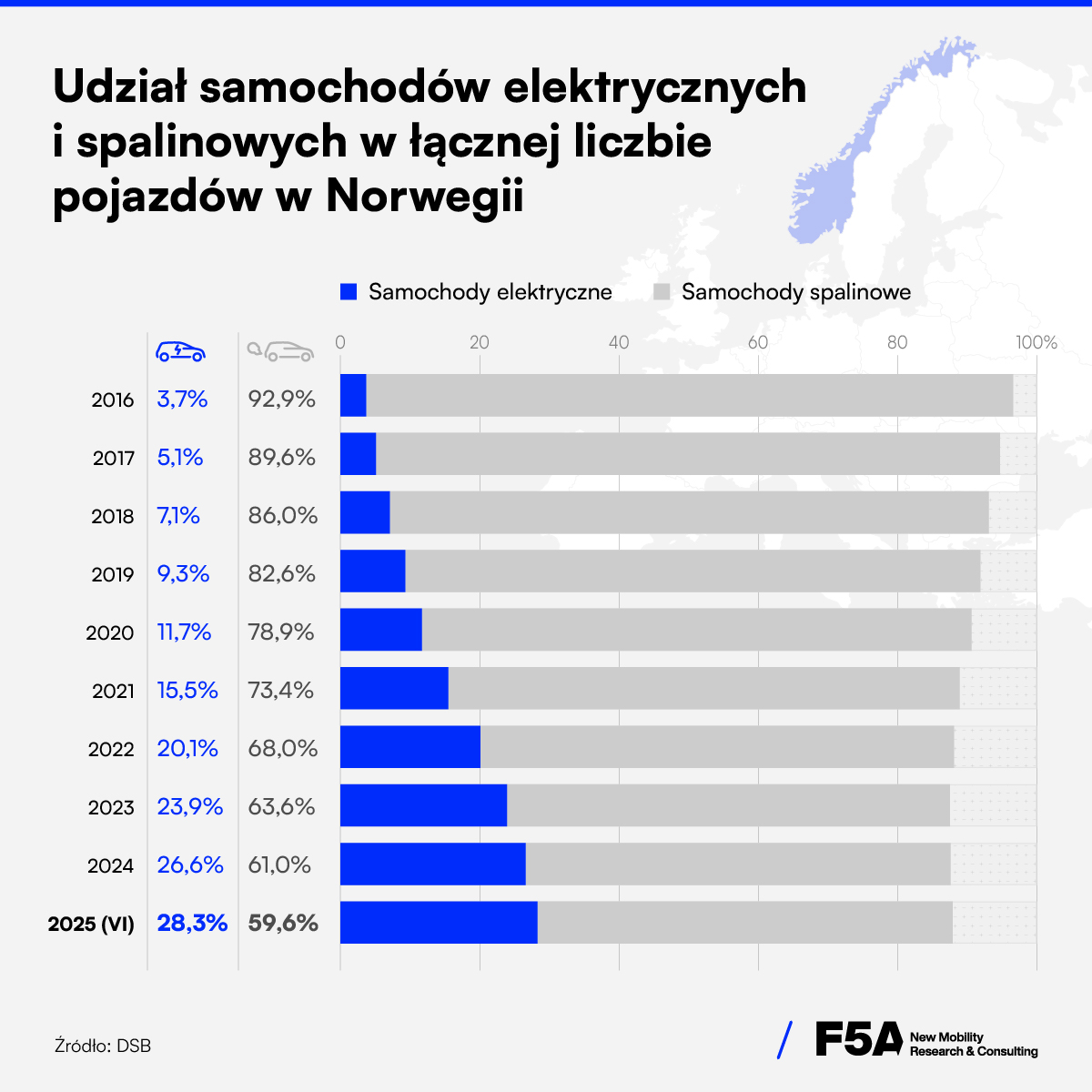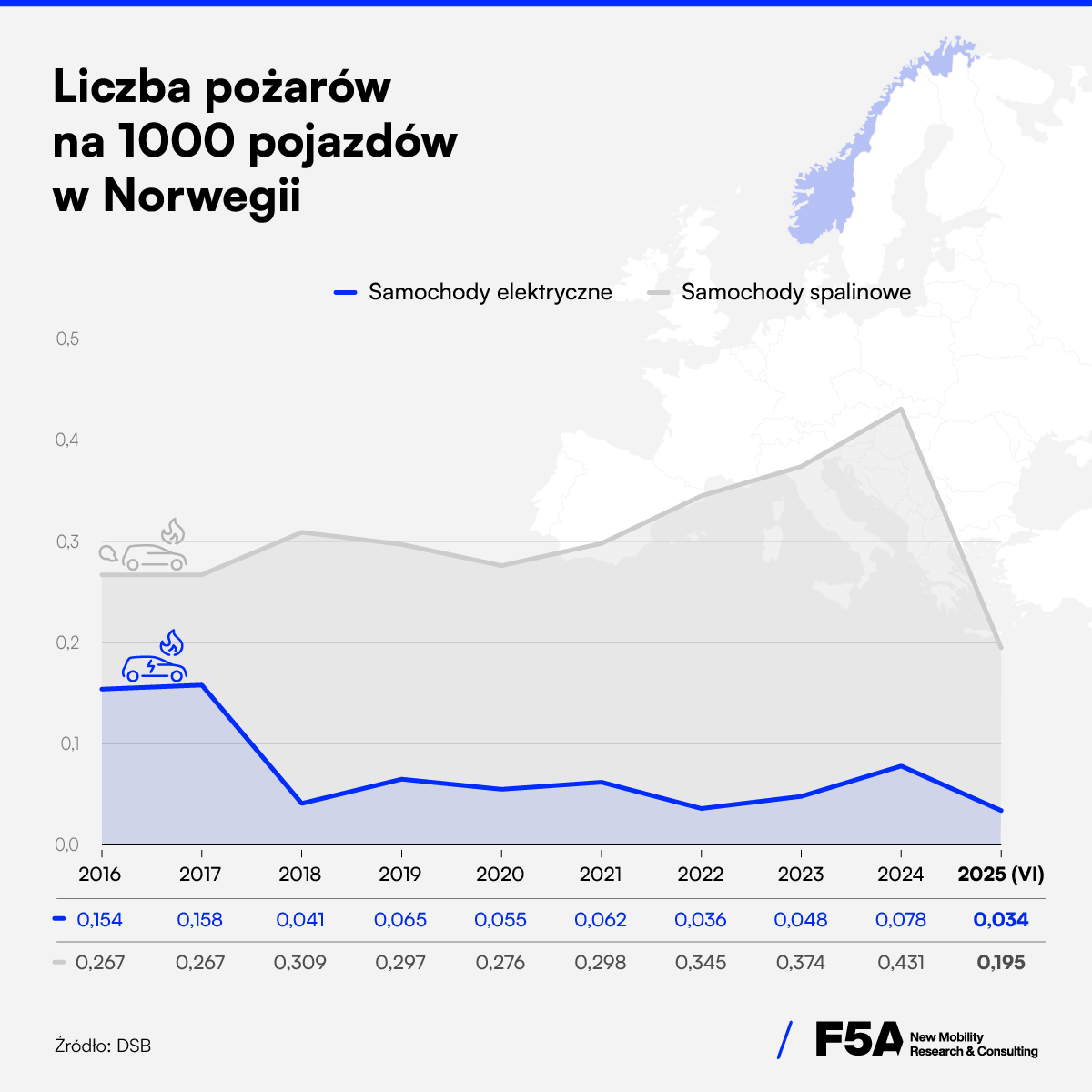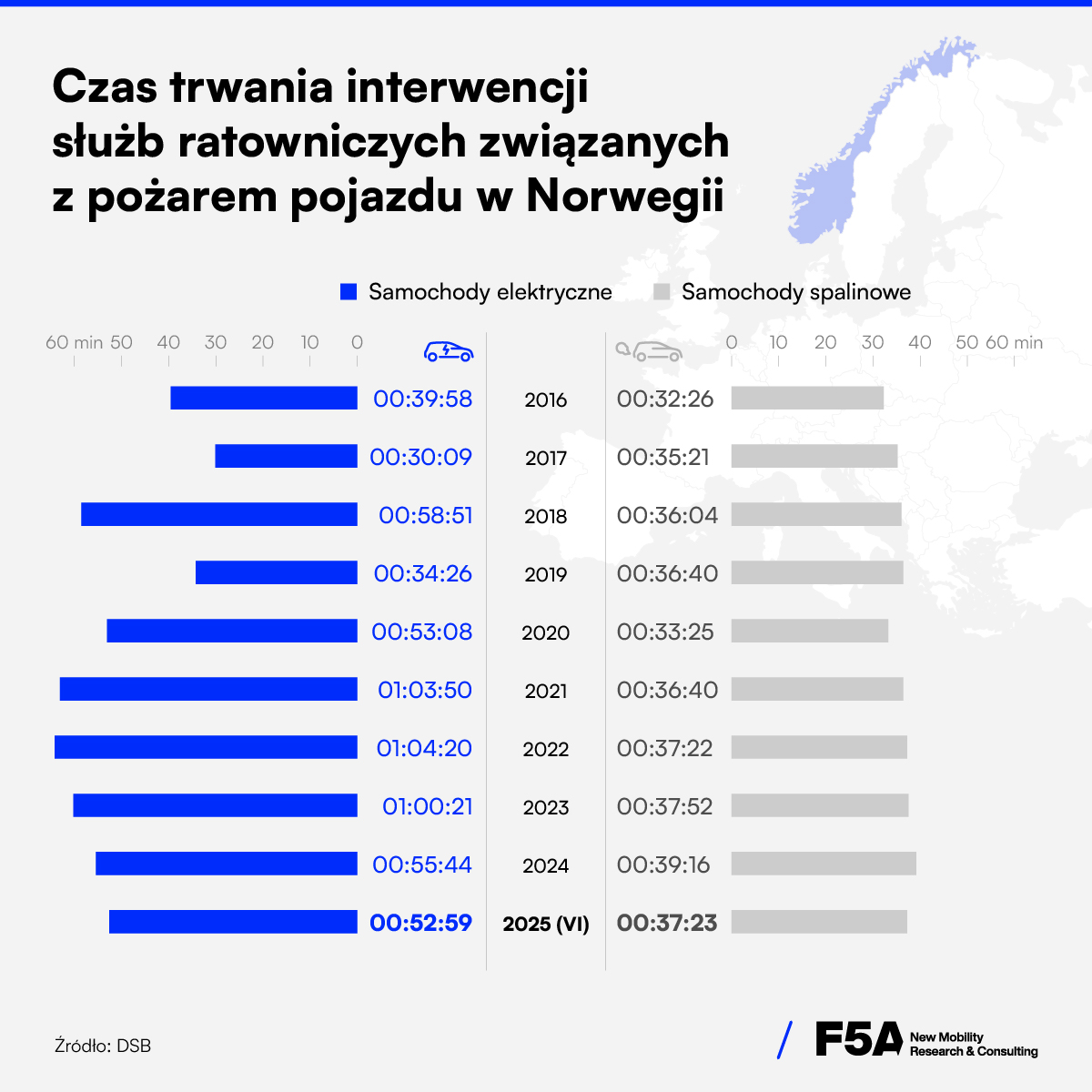While in Poland concerns about the safety of electric vehicles still prevail, Norway – where BEVs already account for 28% of the entire vehicle fleet – provides hard data that challenge these fears.
The mature Norwegian market shows that the increase in the number of electric vehicles does not lead to higher fire risk – quite the opposite. An analysis of long-term statistics indicates that electric cars catch fire several times less often than combustion-engine vehicles, and the effectiveness of rescue operations improves as emergency services gain experience. Norway has thus become a key point of reference for countries like Poland, where electromobility is still at an early stage of development.
Norway has long remained the European leader in electromobility, serving as a benchmark for studies related to electric vehicle safety. As of the end of June 2025, there were 3,093,293 passenger cars registered in Norway, of which 874,307 were fully electric (BEVs). This means that BEVs accounted for 28.3% of the national vehicle fleet. Norway remains one of the few countries where electric vehicles make up more than a quarter of all cars, and this share continues to grow year after year.

During the analyzed period, around 10% of Norway’s vehicle fleet consisted of hybrid cars, gas-powered vehicles, and those using other types of propulsion.
In the first half of 2025, Norwegian emergency services recorded 403 vehicle fires. Of these, 359 involved combustion vehicles, 12 hybrids (HEV/PHEV), and only 30 fully electric cars. The share of BEV fires in the total number of incidents stood at 7.4%, which is significantly lower than their 28.3% share of the national fleet.
When recalculated per 1,000 registered vehicles, the differences become even more striking. The fire rate for BEVs in the first half of 2025 was just 0.034, while for combustion vehicles it reached 0.195. This means that, statistically, combustion-engine cars in Norway catch fire almost six times more often than electric cars. In 2024, there were 63 electric vehicle fires, despite the BEV fleet already exceeding 803,559 units, showing that the annual rate has remained relatively stable. Thus, the increase in the number of registered EVs does not result in a proportional rise in the number of fires.
An analysis of Norwegian market data from the past decade reveals a clear downward trend in electric vehicle fires. Until 2017, the rate was about 0.15 fires per 1,000 vehicles. In 2018, it dropped to 0.041, and in subsequent years fluctuated between 0.036 and 0.078. This represents a reduction of between 48% and 76%, depending on the reference year (from 0.15 down to 0.078 or 0.036). During the same period, the BEV fleet expanded significantly — from 3.7% of the total fleet in 2016, to 11.7% in 2020, and 26.6% by the end of 2024. In less than a decade, the share of BEVs increased sevenfold, while the fire rate dropped fourfold.
In contrast, combustion-engine vehicles show the opposite trend. In 2016, they accounted for 92.9% of the fleet, falling to 78.9% in 2020, and 61% by the end of 2024. Despite this decline in market share, their fire rate has been steadily rising — from 0.267 fires per 1,000 vehicles in 2016 to 0.431 in 2024, an increase of 61%. This trend has been consistent and continuous, indicating a deteriorating level of fire safety among combustion-engine vehicles.

In public debate, including in Poland, it is often suggested that electric vehicle fires are exceptionally difficult to control and last much longer than fires in combustion-engine vehicles. Data from Norway debunk this myth. Between 2016 and 2019, the response time for BEV fires ranged from 30 minutes to one hour. Since 2020, it has stabilized at around one hour.
For comparison, the extinguishing time for combustion vehicles in Norway ranges between 30 and 40 minutes. This difference does not result from more intense BEV fires, but from the safety procedures in place. In the case of electric vehicle fires, fire services undertake additional measures, such as cooling battery modules or monitoring the risk of secondary ignition, which extends operational time, but often serves purely preventive purposes.

A comparison with the situation in Poland highlights the importance of operational experience. In the first half of 2025, the average response time for BEV fires in Poland was 2 hours and 39 minutes—almost twice as long as in Norway. For combustion vehicles, it was 1 hour and 5 minutes. The longer intervention time is not due to more intense fires, but to operational caution and implemented safety procedures.
Norway is today the most mature e-mobility market in Europe and an excellent reference point for countries just beginning their transport transformation, such as Poland. With almost 30% of the fleet being electric vehicles, data from Norway clearly demonstrate that the growth in BEV numbers does not lead to an increased fire risk. Moreover, fire rates are consistently decreasing, even as registrations rise.
The Norwegian case debunks the myth of “dangerous EVs” and confirms that the development of e-mobility can go hand in hand with improvements in overall safety. The implications for Poland are clear: there is no reason for concern. If the domestic market develops based on best practices and experiences from countries like Norway, electric vehicles can not only support climate goals but also contribute to real improvements in road safety.
This study was prepared for the Polish New Mobility Association (PSNM) by F5A.


